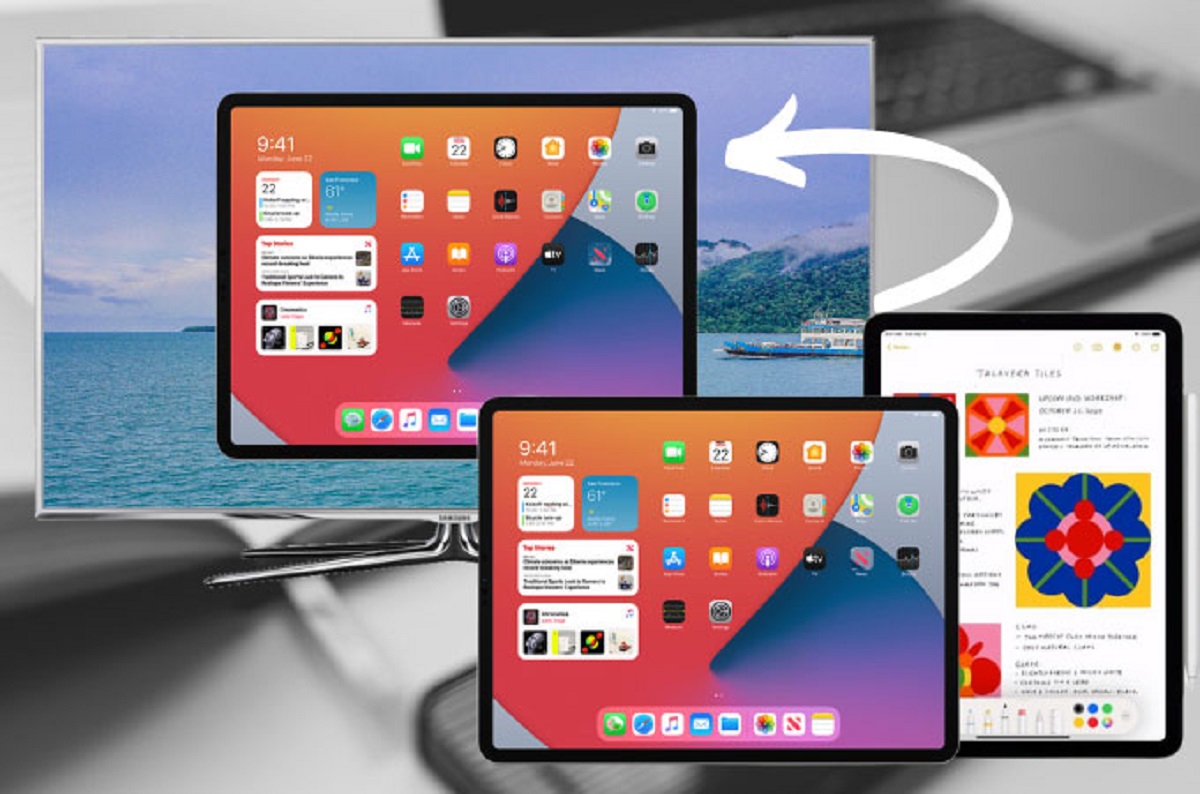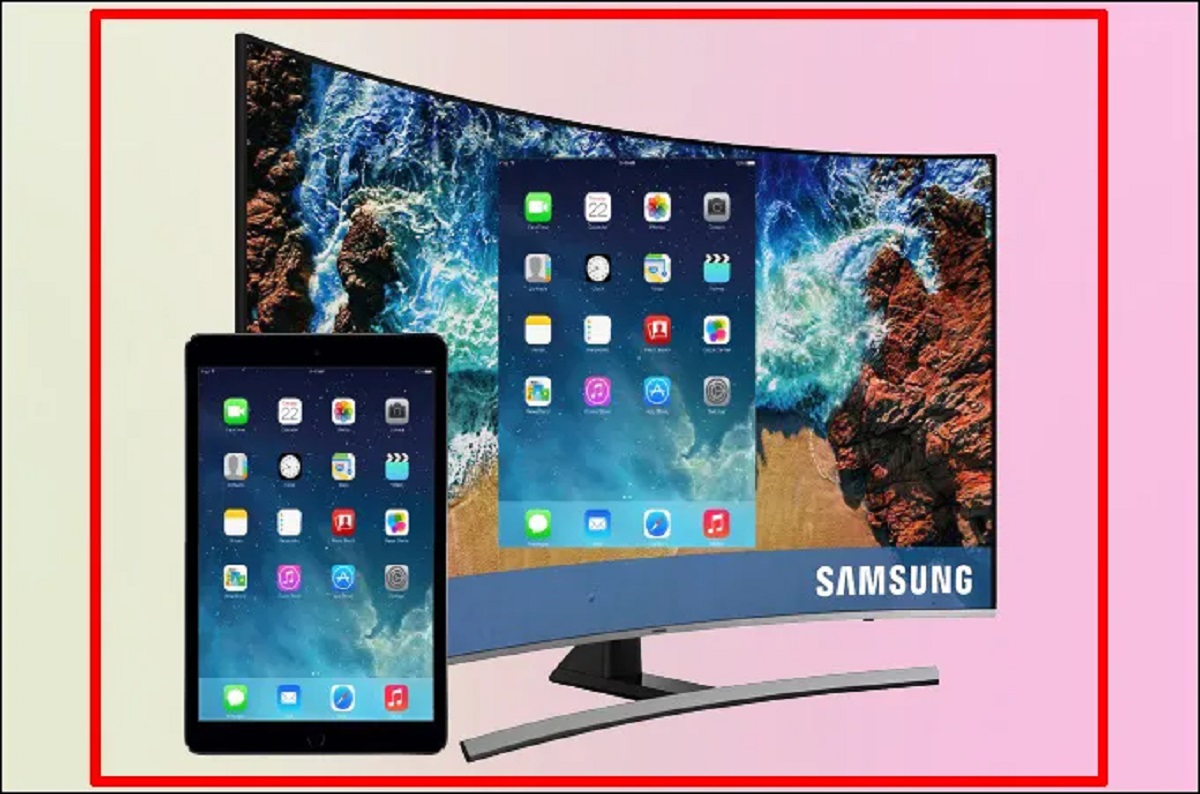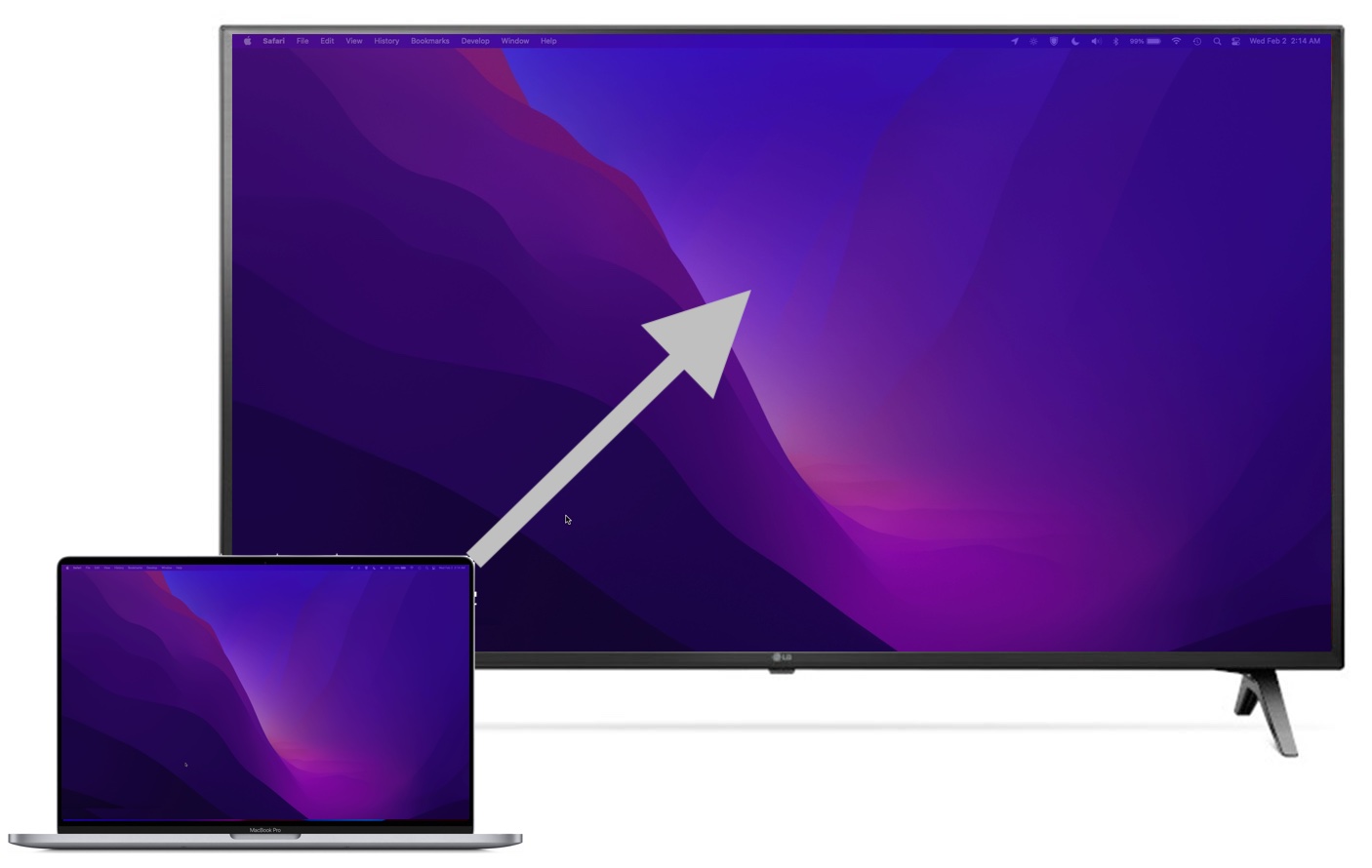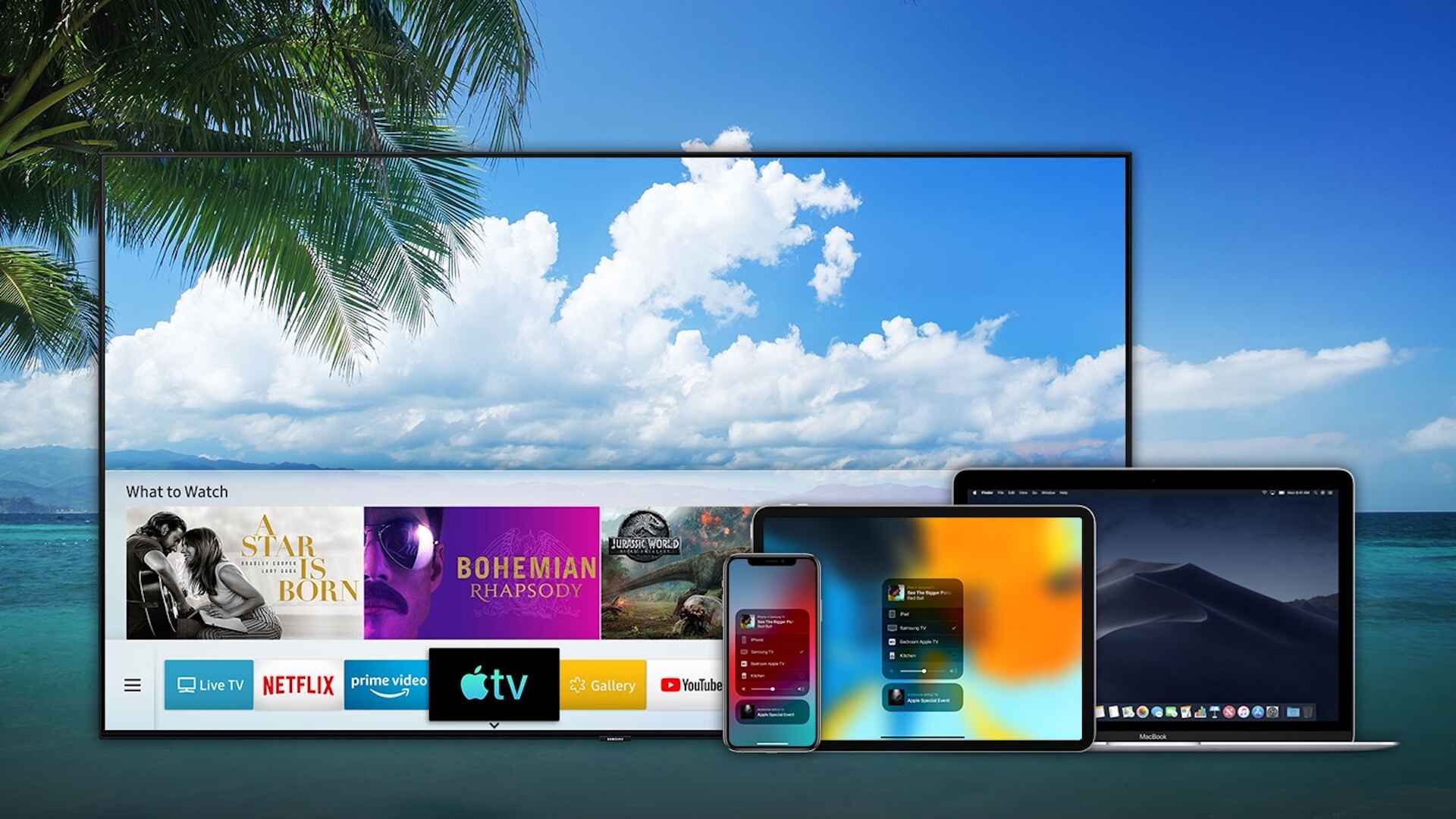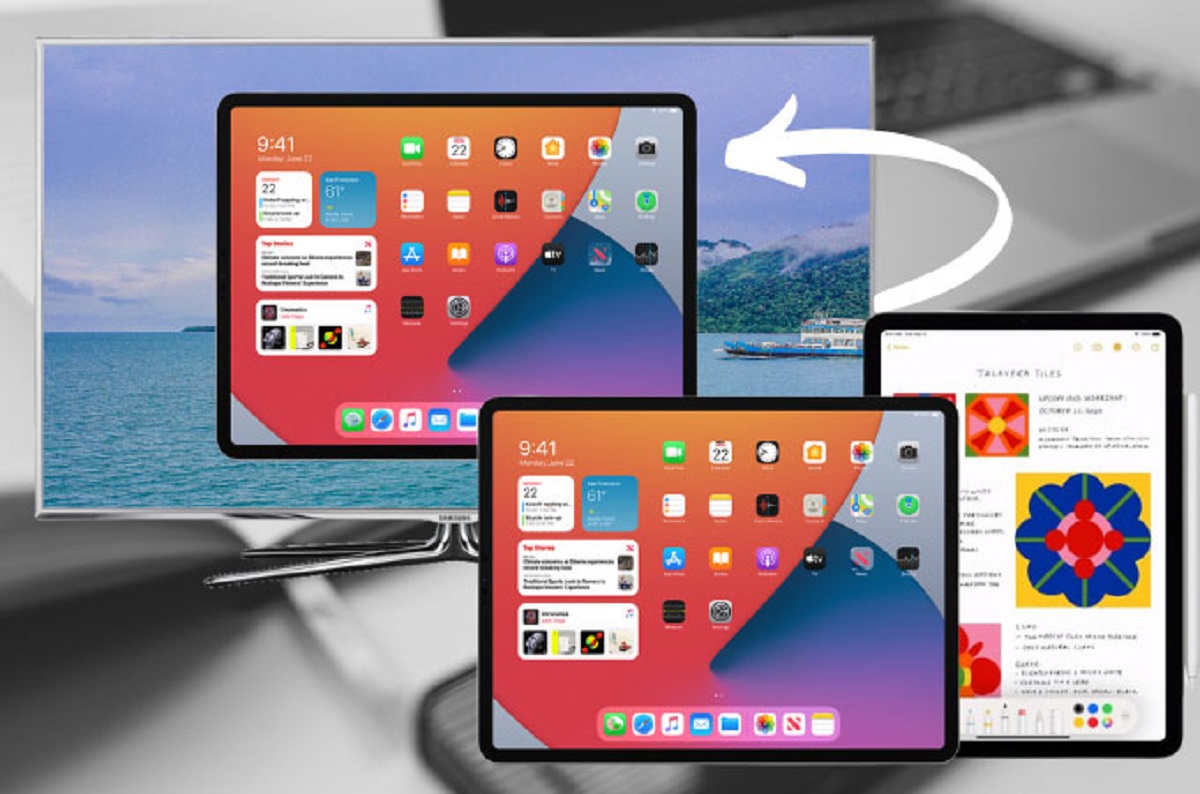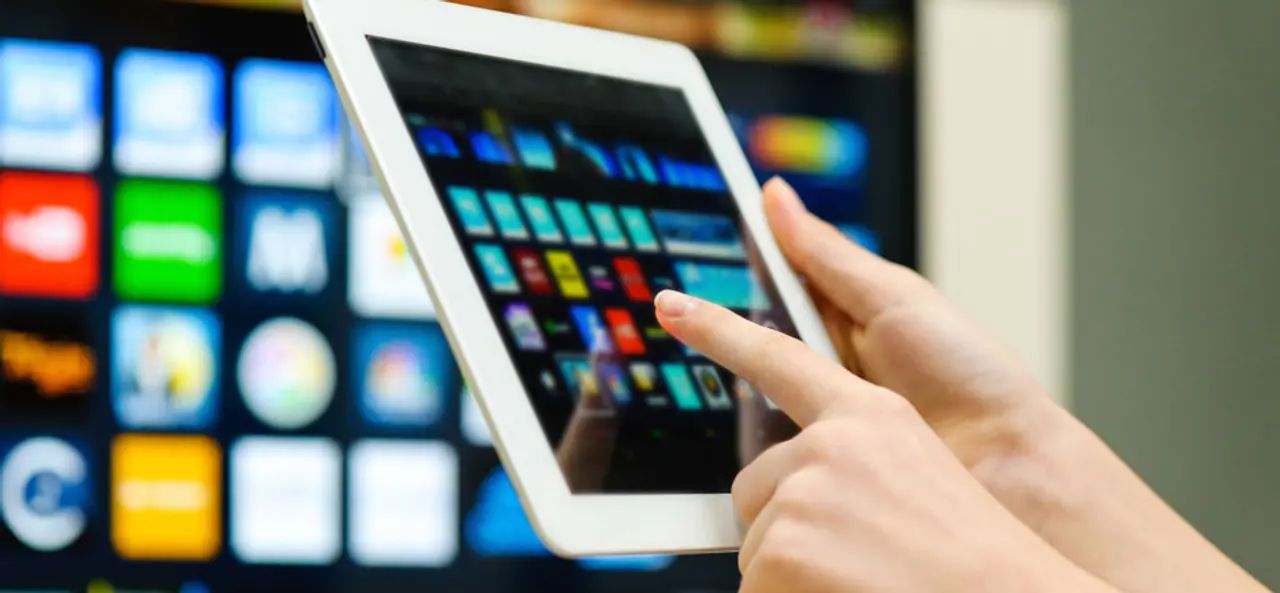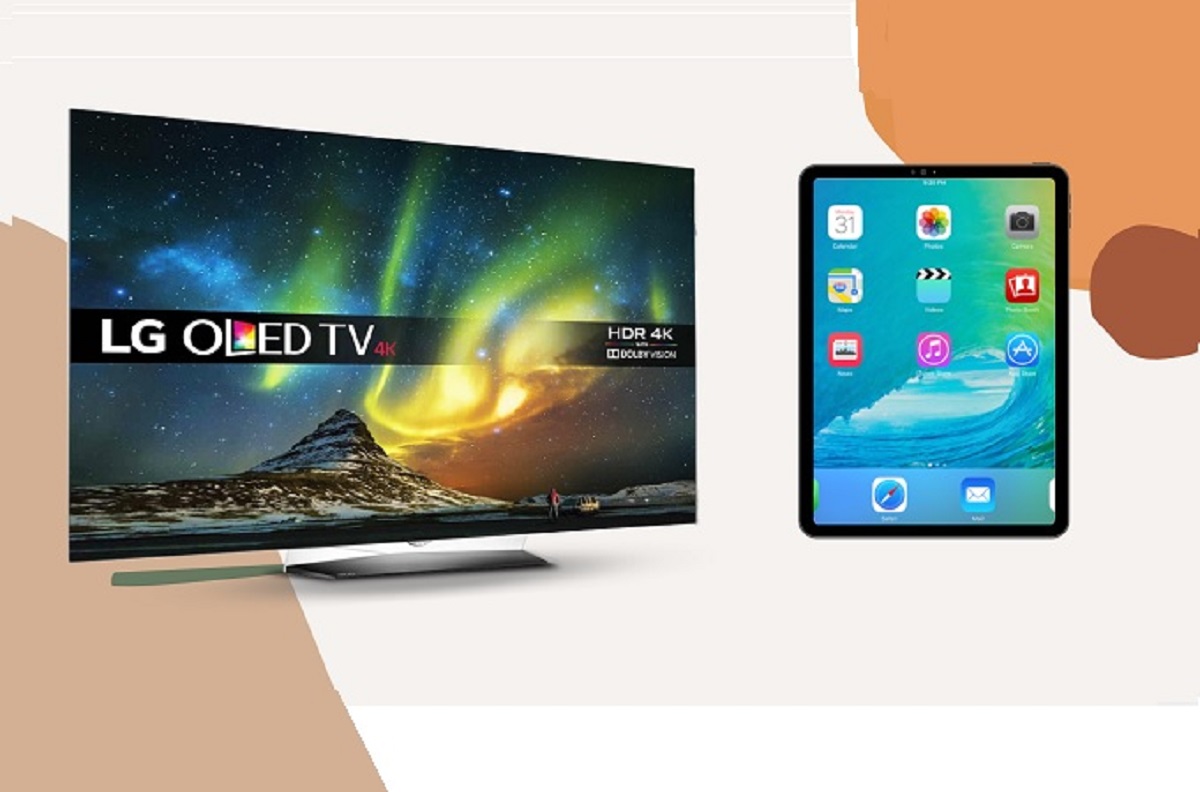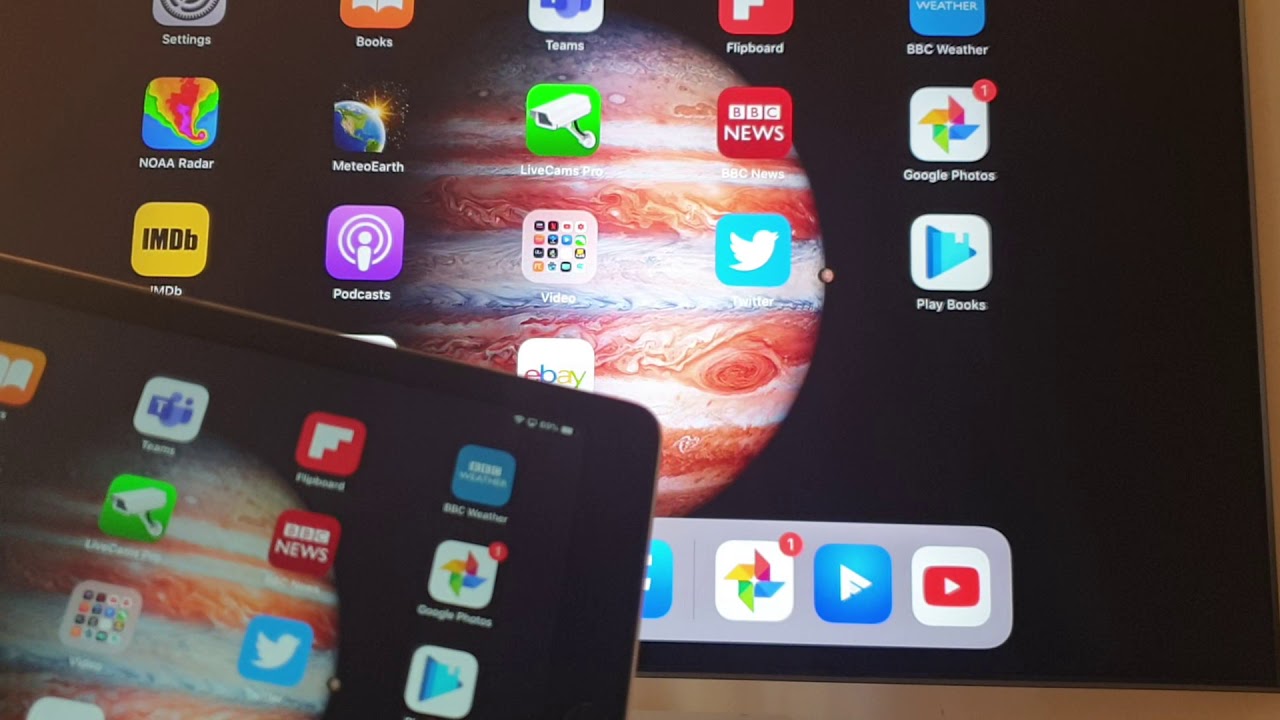Introduction
With the advent of technology, our smartphones and tablets have become an integral part of our daily lives. They offer a wide array of features and functionalities that allow us to work, connect, and entertain ourselves on the go. One such feature that has gained popularity in recent years is screen mirroring.
Screen mirroring, also known as screen casting or screen sharing, enables you to replicate your device’s display onto a larger screen such as a smart TV. This means that whatever you see on your smartphone or tablet can be mirrored onto your TV, providing a more immersive and enhanced viewing experience.
So, why would you want to mirror your iPad to your smart TV in the first place? Well, the reasons are plenty. Whether you want to enjoy your favorite movies, stream videos, showcase pictures and videos to a larger audience, or even play mobile games on a bigger screen, screen mirroring allows you to do all of this and more.
Not all smart TVs come with built-in screen mirroring capabilities, so it’s important to check if your TV supports this feature before attempting to mirror your iPad. To do so, refer to the user manual of your smart TV or check the manufacturer’s website.
In this article, we will guide you through various methods to mirror your iPad to your smart TV. We’ll cover popular options such as using AirPlay, HDMI cable, Chromecast, and streaming devices. So, let’s dive in and explore the exciting world of iPad screen mirroring!
What is screen mirroring?
Screen mirroring, also referred to as screen casting or screen sharing, is the process of duplicating the screen of one device onto another device with a larger display, such as a smart TV or a computer monitor. It allows you to view and interact with the content on your device on a bigger screen, providing a more immersive experience.
Screen mirroring works by establishing a wireless or wired connection between your device and the display device. This connection allows the display device to mirror the exact content, including videos, photos, apps, and even games, that is being shown on your device’s screen. Essentially, it mirrors the entire user interface of your device onto the larger screen, making it appear as if you are directly using your device on the larger display.
The main advantage of screen mirroring is that it allows you to enjoy your content on a larger screen, enhancing the visibility and making it more comfortable for multiple people to view simultaneously. Whether you want to watch a movie with friends and family, display a presentation in a business meeting, or play games with a larger field of view, screen mirroring makes it possible.
There are different methods to achieve screen mirroring, depending on the devices you’re using. For example, if you have an iPad and want to mirror it to a smart TV, you can use technologies like AirPlay, HDMI cable, Chromecast, or streaming devices to establish a connection and mirror your iPad’s screen.
It’s important to note that screen mirroring is different from casting or streaming media to a TV. While casting or streaming(media) involves sending audio or video content from one device to another, screen mirroring duplicates everything on your device’s screen and allows you to control it from the larger display.
So, whether you want to share photos and videos with your friends, enjoy streaming services on a big screen, or simply make your gaming experience more immersive, screen mirroring is the perfect solution. It offers a seamless way to enjoy your content on a larger display without the need for any additional setup or equipment.
Why would I want to mirror my iPad to my smart TV?
Screen mirroring your iPad to your smart TV opens up a world of possibilities and benefits. Here are some compelling reasons why you might want to take advantage of this feature:
- Enhanced Viewing Experience: One of the primary reasons to mirror your iPad to your smart TV is to enjoy a larger and more immersive viewing experience. Whether you’re watching your favorite movies, TV shows, or videos from streaming services, seeing them on a big screen enhances the details and makes the whole experience more enjoyable.
- Sharing Content: Mirroring your iPad to your smart TV allows you to effortlessly share photos, videos, and presentations with your friends, family, or colleagues. Instead of passing your iPad around or crowding around its small screen, you can showcase your content on a larger display, making it easier for everyone to see and engage with.
- Gaming on the Big Screen: If you enjoy mobile gaming, mirroring your iPad to your smart TV can take your gaming experience to the next level. Playing action-packed games on a larger screen not only amplifies the visuals but also offers a more immersive and immersive gaming experience, especially when coupled with a compatible game controller.
- Productivity and Collaboration: Screen mirroring can be incredibly useful for business meetings, classrooms, or any collaborative setting. By mirroring your iPad to a smart TV, you can display presentations, documents, and apps on a larger screen, making it easier for everyone to follow along, contribute, and engage in the discussion.
- Multitasking: With screen mirroring, you can multitask efficiently. While mirroring your iPad’s screen on your smart TV, you can simultaneously use your iPad for other tasks such as checking emails, browsing the web, or working on documents. This can be particularly useful during video conferences or when you need to reference information while presenting.
Overall, the ability to mirror your iPad to your smart TV provides you with a more versatile and flexible way to enjoy and share content. Whether it’s for entertainment, productivity, or collaboration purposes, screen mirroring expands the capabilities of your iPad, allowing you to leverage the advantages of a bigger screen and create a more visually captivating and interactive experience.
How do I know if my smart TV supports screen mirroring?
If you’re considering mirroring your iPad to your smart TV, it’s essential to check if your TV supports screen mirroring before attempting to establish a connection. Here are a few ways to determine if your smart TV has screen mirroring capabilities:
- Check the user manual: The first step is to refer to the user manual of your smart TV. The manual usually includes detailed information about the features and functionalities of your TV, including whether it supports screen mirroring.
- Manufacturer’s website: If you don’t have the user manual or can’t find the relevant information, another option is to visit the manufacturer’s website. Most manufacturers provide product support and documentation on their websites, where you can find specifications and details about the screen mirroring capabilities of your particular smart TV model.
- Look for screen mirroring options: On your smart TV, navigate through the settings menu and look for any options related to screen mirroring. Depending on the brand and model, common terms to look out for include “Screen Mirroring,” “Miracast,” “Wireless Display,” or “AllShare Cast.” If you find any of these options, it’s a good indication that your smart TV supports screen mirroring.
- Google your TV model: If you’re still unsure if your smart TV supports screen mirroring, you can also try searching for your TV model online. By entering your TV model along with terms like “screen mirroring” or “miracast support,” you may come across forum discussions, user experiences, or official documentation that can provide the information you need.
It’s worth noting that different brands and models of smart TVs may utilize different screen mirroring technologies. For example, some TVs support Miracast, which is a wireless standard for screen mirroring, while others may support technologies like Chromecast or AirPlay. Ensure that your iPad and smart TV are compatible with the same screen mirroring technology to establish a successful connection.
If your smart TV does not support screen mirroring, don’t worry! There are alternative methods available, such as using HDMI cables, streaming devices like Roku or Amazon Fire TV Stick, or smart TV boxes like Apple TV or Android TV, which provide screen mirroring functionality.
By verifying the screen mirroring capabilities of your smart TV beforehand, you can ensure a seamless and hassle-free experience when attempting to mirror your iPad’s screen and enjoy your favorite content on a bigger display.
How to mirror your iPad to your smart TV using AirPlay
If you have an iPad and a smart TV that supports AirPlay, you can easily mirror your iPad’s screen to the TV. AirPlay is a wireless technology developed by Apple that allows you to stream and mirror content from your iOS device to compatible Apple TV or AirPlay-enabled smart TVs.
Here’s how you can mirror your iPad to your smart TV using AirPlay:
- Make sure your iPad and smart TV are connected to the same Wi-Fi network.
- On your iPad, swipe down from the top right corner of the screen (or swipe up on older devices) to access the Control Center.
- In the Control Center, locate the “Screen Mirroring” or “AirPlay” option. The icon looks like a rectangle with an arrow at the bottom.
- Tap on the “Screen Mirroring” or “AirPlay” option to see the list of available devices.
- From the list of devices, select your smart TV to establish the connection.
- Enter the AirPlay passcode, if prompted, to authenticate the connection.
- Once connected, your iPad’s screen will be mirrored on your smart TV, displaying the same content and allowing you to control it from your iPad.
With AirPlay, you can not only mirror your iPad’s screen but also enjoy additional features like streaming audio to your smart TV or using it as a secondary display for certain apps that support AirPlay.
Please note that to use AirPlay, both your iPad and smart TV must support this technology. While AirPlay is primarily designed for Apple devices, some smart TVs from popular manufacturers also come with built-in AirPlay support.
Additionally, ensure that your iPad is running on the latest iOS version, as older software versions may not have the AirPlay feature or may not be fully compatible with your smart TV.
By following these simple steps, you can easily mirror your iPad’s screen using AirPlay, allowing you to enjoy your favorite movies, videos, photos, apps, and more on the big screen of your smart TV.
How to mirror your iPad to your smart TV using HDMI cable
If your smart TV does not support AirPlay or any other wireless screen mirroring technology, you can still mirror your iPad to the TV using an HDMI cable. This method is suitable for both older and newer smart TVs, as long as they have an HDMI input port.
Here’s a step-by-step guide on how to mirror your iPad to your smart TV using an HDMI cable:
- Ensure that your iPad and smart TV are turned off.
- Connect one end of the HDMI cable to the HDMI output port on your iPad. For newer models, you may need a Lightning to HDMI adapter, while older models may have a dedicated HDMI port.
- Connect the other end of the HDMI cable to an available HDMI input port on your smart TV. Note down the HDMI input number that you have connected the cable to.
- Turn on your smart TV and set it to the input channel corresponding to the HDMI port you connected the cable to. This can usually be done by using the TV remote to navigate through the input/source menu.
- Turn on your iPad. It should automatically detect the HDMI connection and display the mirrored content on your smart TV.
- Use your iPad as you normally would, and the content will be replicated on the larger screen of your smart TV.
By using an HDMI cable, you can mirror not only videos and photos but also any other content from your iPad onto the TV. This includes apps, presentations, documents, and even games.
It’s worth mentioning that some apps may have restrictions on mirroring copyrighted content due to digital rights management (DRM) policies. In such cases, you may encounter limitations when mirroring specific applications or streaming services.
This method offers a reliable and straightforward way to mirror your iPad to your smart TV, providing a seamless viewing experience and eliminating the need for any additional software or wireless connections.
How to mirror your iPad to your smart TV using Chromecast
If you have a Chromecast device connected to your smart TV, you can easily mirror your iPad’s screen to the TV using the Google Home app. Chromecast is a streaming device that allows you to cast or mirror content from your mobile device to your TV, making it an ideal choice for iPad screen mirroring.
Here’s a step-by-step guide on how to mirror your iPad to your smart TV using Chromecast:
- Ensure that your iPad, Chromecast device, and smart TV are connected to the same Wi-Fi network.
- Download and install the Google Home app from the App Store on your iPad.
- Launch the Google Home app and sign in with your Google account.
- Tap on the plus (+) icon at the upper left corner of the screen to add a device.
- Select “Set up device” and choose “Set up new devices in your home.”
- Follow the on-screen instructions to set up your Chromecast device and connect it to your smart TV.
- Once set up, go back to the Google Home app and tap on the device icon at the top right corner of the screen.
- Under the “Devices” section, select your Chromecast device.
- In the device settings, tap on the “Cast my screen” option.
- Select your Chromecast device from the list of available devices.
- Your iPad’s screen will now be mirrored on your smart TV through the Chromecast.
By mirroring your iPad to your smart TV using Chromecast, you can enjoy various content, including videos, photos, apps, and even games, on the big screen. You can control the content playback from your iPad, allowing you to seamlessly navigate and interact with your favorite apps.
Keep in mind that the screen mirroring experience may vary depending on the app you are using. Some apps may provide a dedicated Chromecast button for easy casting and control, while others may require you to use the default screen mirroring function.
With Chromecast, you can transform your smart TV into a versatile entertainment hub, allowing you to stream and mirror your iPad’s content effortlessly.
How to mirror your iPad to your smart TV using a streaming device
If you don’t have AirPlay, HDMI input, or Chromecast capabilities on your smart TV, you can still mirror your iPad to the TV by using a streaming device. Streaming devices, like Roku, Amazon Fire TV Stick, Apple TV, or Android TV boxes, provide screen mirroring functionality and offer a wide range of options for connecting your iPad to the TV wirelessly.
Here’s a step-by-step guide on how to mirror your iPad to your smart TV using a streaming device:
- Connect the streaming device to an available HDMI port on your smart TV.
- Ensure that your streaming device and smart TV are connected to the same Wi-Fi network.
- On your iPad, download and install the corresponding app for your streaming device. For example, if you’re using Roku, download the Roku app from the App Store.
- Launch the app on your iPad and follow the on-screen instructions to set up and pair your iPad with the streaming device.
- Once connected, open the app on your iPad and navigate to the screen mirroring or casting option.
- Select the option to mirror your iPad’s screen to your smart TV.
- Your iPad’s screen will now be mirrored on your smart TV through the streaming device.
Using a streaming device provides a convenient and reliable method for mirroring your iPad’s screen to your TV. These devices are designed to be user-friendly and offer additional features such as access to streaming apps, games, and more.
It’s important to note that the steps may vary depending on the brand and model of your streaming device. Refer to the specific instructions provided by the manufacturer or consult the user manual for detailed guidance.
With a streaming device, you can enjoy the benefits of a larger screen to view your favorite content, play games, or even conduct video conferences from your iPad, offering a more engaging and immersive experience.
Troubleshooting tips for screen mirroring issues
While screen mirroring your iPad to your smart TV is generally a straightforward process, you may encounter occasional issues or connectivity problems. Here are some troubleshooting tips to help you resolve common screen mirroring issues:
- Check the Wi-Fi connection: Ensure that both your iPad and smart TV are connected to the same Wi-Fi network. Unstable or weak Wi-Fi signals can result in screen mirroring problems. Consider moving closer to the Wi-Fi router or restarting your router to improve connectivity.
- Restart your devices: Sometimes, simply restarting your iPad, smart TV, or streaming device can resolve temporary glitches or connectivity issues. Turn off the devices, wait for a few seconds, and then power them back on.
- Update the software: Ensure that your iPad, smart TV, or streaming device has the latest software updates installed. Outdated software can lead to compatibility issues or performance problems. Check for updates in the respective settings menus and install any available updates.
- Check for device compatibility: Verify that your iPad and smart TV or streaming device are compatible with the screen mirroring method you are using. Different devices may support different technologies such as AirPlay, Chromecast, or specific streaming apps. Ensure compatibility between your devices for successful mirroring.
- Verify HDMI connections: If you are using an HDMI cable or streaming device with HDMI connectivity, check that the cables are securely connected to the appropriate ports on your iPad, smart TV, or streaming device. Loose or faulty connections can disrupt the screen mirroring process.
- Adjust display settings: On your smart TV, navigate to the display settings and ensure that the correct input source is selected for screen mirroring. Some TVs may have specific settings or options related to screen mirroring that can be adjusted to improve the mirroring experience.
- Close unnecessary apps or processes: Running too many apps or processes on your iPad can affect the performance and stability of screen mirroring. Close any unnecessary apps or background processes that may be consuming resources and try again.
- Reset network settings: If you’re continuously experiencing connectivity issues, you can try resetting the network settings on your iPad. This will remove all saved Wi-Fi networks and their configurations. Go to the iPad’s settings, find the “Reset” option, and choose “Reset Network Settings.”
- Contact customer support: If you have followed the troubleshooting steps but are still unable to resolve the screen mirroring issues, it’s recommended to reach out to the customer support of your specific devices. They can provide you with further guidance or assist you in resolving the problem.
By following these troubleshooting tips, you should be able to resolve most common screen mirroring issues and enjoy a seamless mirroring experience between your iPad and smart TV. Remember to refer to the user manuals or online documentation for specific instructions related to your devices.
Conclusion
Screen mirroring your iPad to your smart TV opens up a world of possibilities and enhances the way you consume and share content. Whether it’s for entertainment, productivity, or collaboration purposes, screen mirroring provides a seamless way to enjoy your iPad’s content on a larger display.
In this article, we explored various methods of mirroring your iPad to your smart TV. We discussed using AirPlay for Apple devices, HDMI cables for a direct connection, Chromecast for wireless mirroring, and streaming devices like Roku or Amazon Fire TV Stick. Each method offers its own advantages and requires different hardware and configuration.
Before attempting to mirror your iPad, it’s important to ensure that your smart TV supports screen mirroring. Take the time to consult the user manual or manufacturer’s website to verify compatibility.
While screen mirroring is generally straightforward, you may encounter occasional issues. We provided troubleshooting tips to help address common problems such as Wi-Fi connectivity, software updates, and HDMI connections. Following these steps will likely resolve any minor issues and ensure a smooth mirroring experience.
Overall, screen mirroring is a powerful feature that allows you to fully utilize the capabilities of your iPad in a larger display environment. Whether you want to enjoy movies, share presentations, play games, or collaborate on projects, screen mirroring provides a versatile solution. So, go ahead, choose the method that suits your needs, and start mirroring your iPad to your smart TV for a more immersive and enjoyable experience.







